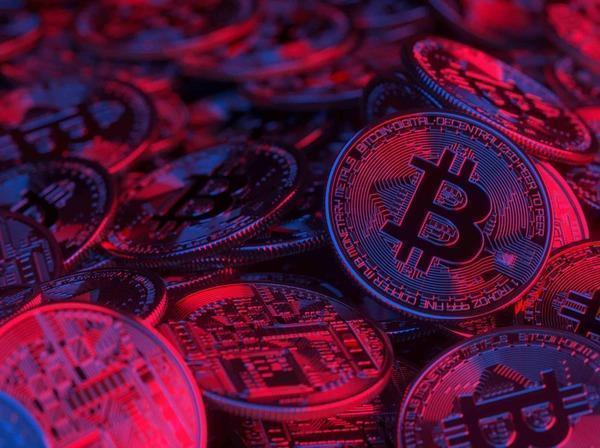The Rise of E Money Tokens: Trends and Predictions for the Future

Strong 8k brings an ultra-HD IPTV experience to your living room and your pocket.
The digital financial landscape has been experiencing a significant transformation with the rise of e-money tokens. These digital representations of fiat currency, also known as digital money, have been gaining traction due to their convenience, security, and potential to revolutionize traditional financial systems. This article explores the current trends driving the adoption of e money tokens and provides predictions for their future impact on the global economy.
Understanding E Money Tokens
E-money tokens are digital currencies issued by financial institutions or central banks and are backed by the equivalent value in fiat currency. Unlike cryptocurrencies, e-money tokens are designed to be stable, reflecting the value of the underlying currency. They enable seamless digital transactions, reducing the need for physical cash and enhancing the efficiency of financial systems.
Current Trends in E Money Tokens
1. Central Bank Digital Currencies (CBDCs)
One of the most notable trends in the realm of e-money tokens is the development and implementation of Central Bank Digital Currencies (CBDCs). Countries like China, Sweden, and the Bahamas have already launched their CBDCs, while many others are in various stages of research and development. CBDCs aim to provide a secure and efficient digital payment system, ensuring financial inclusion and reducing the costs associated with cash handling and distribution.
2. Increased Adoption by Financial Institutions
Banks and financial institutions are increasingly adopting e-money tokens to offer enhanced services to their customers. By leveraging blockchain technology, these institutions can provide faster, more secure, and cost-effective transactions. This trend is particularly evident in cross-border payments, where traditional methods are often slow and expensive. E-money tokens facilitate real-time settlements, reducing the friction and costs associated with international transactions.
3. Integration with Digital Wallets
The integration of e-money tokens with digital wallets is another significant trend. Digital wallets, such as PayPal, Apple Pay, and Google Wallet, are becoming ubiquitous, offering users a convenient way to store and manage their digital currencies. The compatibility of e-money tokens with these wallets enhances their accessibility and usability, driving further adoption among consumers and businesses alike.
4. Regulatory Developments
Regulatory bodies worldwide are recognizing the potential of e-money tokens and are working on frameworks to govern their use. These regulations aim to ensure the security and stability of digital financial systems while preventing illicit activities such as money laundering and fraud. Clear regulatory guidelines provide confidence to businesses and consumers, fostering the growth of e-money tokens in the mainstream financial ecosystem.
Predictions for the Future of E Money Tokens
1. Widespread Adoption and Mainstream Acceptance
As e-money tokens continue to demonstrate their value, we can expect widespread adoption and mainstream acceptance. Businesses across various sectors will integrate e-money tokens into their payment systems, offering customers more flexible and efficient payment options. This adoption will be driven by the increasing demand for digital financial solutions and the continuous evolution of technology.
2. Enhanced Financial Inclusion
E-money tokens have the potential to significantly enhance financial inclusion, particularly in developing regions where traditional banking infrastructure is limited. By providing access to digital financial services, e-money tokens can empower individuals and businesses, promoting economic growth and reducing poverty. Governments and financial institutions will likely collaborate to ensure that e-money tokens reach underserved populations, bridging the financial gap.
3. Innovations in Smart Contracts and Decentralized Finance (DeFi)
The integration of e-money tokens with smart contracts and decentralized finance (DeFi) platforms will drive innovation in the financial sector. Smart contracts, self-executing contracts with the terms of the agreement directly written into code, can automate and streamline various financial processes. DeFi platforms, which operate without intermediaries, will leverage e-money tokens to offer a wide range of financial services, including lending, borrowing, and trading.
4. Improved Security and Privacy
Future advancements in technology will enhance the security and privacy features of e-money tokens. As cyber threats evolve, robust encryption and security protocols will be developed to safeguard digital transactions. Additionally, innovations in privacy-preserving technologies, such as zero-knowledge proofs, will ensure that users can conduct transactions without compromising their personal information.
5. Collaboration Between Governments and Private Sector
The future of e-money tokens will be shaped by collaboration between governments and the private sector. Governments will play a crucial role in establishing regulatory frameworks and ensuring the stability of digital financial systems. Meanwhile, private sector entities, including fintech companies and financial institutions, will drive innovation and develop user-friendly solutions that cater to the needs of consumers and businesses.
Conclusion
The rise of e-money tokens marks a significant milestone in the evolution of digital finance. Current trends, such as the development of CBDCs, increased adoption by financial institutions, and integration with digital wallets, highlight the growing importance of e-money tokens in the global economy. Looking ahead, the widespread adoption, enhanced financial inclusion, and continued innovation in security and privacy will shape the future of e-money tokens. As governments and the private sector collaborate to harness the potential of these digital assets, e-money tokens are poised to revolutionize the way we handle money, making financial systems more efficient, inclusive, and secure.
Note: IndiBlogHub features both user-submitted and editorial content. We do not verify third-party contributions. Read our Disclaimer and Privacy Policyfor details.


